Turn on the gas- not an easy task. Impossible bring gas to the house on one's own. For gas supply to the house it is necessary to go through several stages: obtaining technical conditions, development and approval of the project gas supply, commissioning of the gas pipeline, acceptance of the gas pipeline and signing of the statement of balance sheet ownership.
In this article we will look at final stage- laying pipes and installing gas equipment.
How much does it cost to install a gas pipe to a house?
This question, of course, can be answered accurately only if there is finished project. Gas supply is not carried out “by eye”, this is a criminal offense. Possible consequences of an independent (black) supply of gas are a gas explosion, fire, property damage and even possible human casualties. Therefore, to answer the cost of the supply, an agreed project is required.
Equipment for supplying gas to the house:
Pipe high pressure. Such pipes are not used for gas supply to the house. They are used in main gas pipelines and, as a rule, are not mentioned in the specifications for gas supply to private houses. A high-pressure gas pipe costs about 1000 rubles per linear meter, the type of supply can be air and underground.
- Gas distribution station. Used to supply gas from main pipe into the low pressure pipe. What is the price- it’s impossible to say, it depends on the pressure in the line.
- Low pressure gas pipe. Used to bring gas to the house and for introducing gas into the house. Such a gas pipe costs approximately 300 rubles per linear meter; the supply is almost always carried out underground. The cost of digging a trench for low pressure pipe connection can be considered equal to 1000 rubles per 1 linear meter.
- Gas boiler. There are hundreds of models of gas boilers used in supplying gas to the house. Power gas boiler depends on the area that is supposed to be heated by the supplied gas branch. How much gas the boiler consumes depends on the selected mode, quality natural gas supplied to the house (specific heat of combustion). The cost of a gas boiler can vary from 10 thousand rubles to 500 thousand in the case of supplying gas generating equipment.
- Other gas equipment. To bring gas to the house it is usually not required, but many types of equipment are available both to save gas and to ensure uninterrupted and safe operation gas supply to the house.
Connect the gas pipe to the house necessary exactly at the location specified in the agreed project. It is worth considering the height gas input to the house, because the location of the connection needs to be carefully sealed.
How much does a turnkey gas supply cost?
The answer to this question will depend on the following factors:
- What documents do you already have for the house? Impossible gas supply to a non-existent house.
- How far is the gas main from the supply point? What is the pressure in it?
- Do the owners of the land on which it is planned agree? supply gas, to lay pipes on their land?
- What is the area of the room? What others are on the project? gas supply will there be appliances that consume gas?
- Which line is planned to be installed: underground or above-ground. Is it allowed by the project? supply gas via landline?
- How much are the fees (in the case of SNT) for gas supply??
After answering these questions, it is possible to roughly answer, How much will it cost to supply gas to your home?. Estimated prices may always differ from estimated prices, the only guarantee of correctly calculated final prices for gas supply is a contract.
How long does it take to supply gas to a house?
It is also impossible to answer this question in advance; each situation is purely individual. It happens that the supply to the house can be completed in a month and a half, but it is more correct to count on a period of four to six months from the moment the contract is concluded until the gas supply.
What other points should be taken into account when installing gas into the house?
Installing the supply to the house according to an already agreed upon project is a technical task that our experienced specialists can handle without any problems. All technical supply standards will be observed, from alienation standards to pipe painting. All you have to do is accept the job and enjoy the gas supplied.
Carry out in private house gas sometimes turns out to be difficult and quite expensive. In this article we will try to tell you in detail about the intricacies of connecting gas in a private house and the techniques for laying a gas pipeline. Moreover, it is enough large number The material is devoted to the main stage of gasification - this is the collection and preparation of documentation. It is best to use this article as a guide or reminder in this process. Well, now let’s move directly to the article.
When you need to cut into a gas pipeline, you should first find out who owns it. Most often it is GorGaz. You must obtain permission from the owner to tie into the gas pipeline. When the owner of the gas pipeline has approved your application, the next step is to contact a design organization, which will have to develop a project for gasification of your house and the possibility of connecting it to the gas pipeline.
How to supply gas to a private house?
There are only six known steps to gasify a home:First step. Definition technical specifications.
If you want to be able to supply gas to an individual home, the consumer must have in hand the technical conditions (TU) for the possibility of gasifying a residential building, which are issued by the city gas distribution organization. To obtain technical data. conditions, you need the following documents:
- Write an application for the issuance of technical specifications, which will indicate: address, volume of gas consumption, and the type and quantity of gas-consuming equipment.
- You need the passport of the person making the order.
- Required documents for land plot, which confirm your right to it.
- The same documents for your residential building: if it already exists, then this is registration of ownership; and if the house is only at the construction or project stage, you need to have a written order from the authorities, as well as a letter of permission from the Committee on Urban Planning and Architecture (KGA).
- a power of attorney, certified by a notary, to represent interests in obtaining technical conditions.
- There must be a situational plan of a residential building or your site.
- if the customer wants to build a gas pipeline at his own expense, then he should also issue a “letter of refusal” from the queue for budget gasification.
Second step. Creation of a gas supply system project.
All necessary design work in private residential buildings can be carried out by those organizations that have licenses for this type of activity, this includes the design and construction departments of the gas distribution department.
To prepare a complete project, it is necessary for the customer to prepare the following documents: explication and topographic survey of wells for the M1:500 project, but no later than 2 years; You will need documentation on the structure and site (all available architectural drawings for building a house and a site plan), which will also be agreed upon with an architect in the area; type of equipment: stove or boiler; also Condition Inspection Report ventilation ducts with chimneys.

The third step is approval.
The prepared gas supply project, depending on the subtleties and nuances of the project, must be agreed upon with the technical management and other interested organizations. This will include the Committee on Urban Planning and Architecture; Committee, which deals with issues of improvement and road maintenance; Department of Landscape Management; as well as Rostekhnadzor.
Step number four. Construction of a gas pipeline.
It is important to note that only those organizations that have specific licenses for this type of activity can implement a gas supply project for your home (construction and installation work). Completion of construction should be documented with an Acceptance Certificate for the completed construction of a gas distribution system facility along internal and external gas pipelines. Thus, the State Commission should include representatives of: the design organization, the operating organization, the customer, construction organization, Rostekhnadzor (representative from the gas supervision department) and the department for gas safety.
Step number five. Drawing up a service agreement technical condition gas pipeline.
It is important to know that the PEU GRO must sign a service agreement. The price must be calculated within one week maintenance internal gas pipeline. After which you should sign the Maintenance Agreement, and you can safely move on to the next step. To conclude this agreement for those. servicing a gas pipeline with gas distribution facilities You should have the following documents with you: a complete set of executive and technical documents for gas supply; a copy of the house owner's passport (pages 2,3 and 5); one copy of the certificate of ownership of the house (this can be a technical passport for the house, an inheritance or purchase document, but if there are no documents for the house, it is important to provide a copy of the certificate for this land plot). There must be a copy of the maintenance and commissioning agreement; a copy of the power of attorney, which is notarized (if the agreement is executed through a power of attorney); also a copy of the contract for automatic maintenance (if the house has a gas control system); The originals of all passports for the gas equipment in the house are also submitted.
Sixth step. We conclude a contract for gas consumption.
A very important condition is to sign an agreement so that gas is supplied to your home. You can conclude such an agreement absolutely free of charge; the consumer will only need to pay for the volume of gas received.
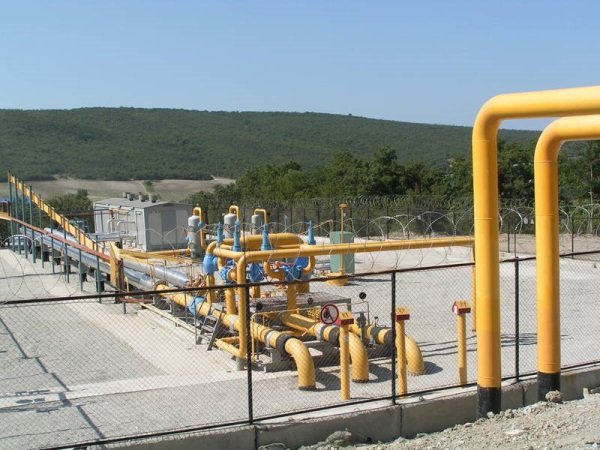
List of documents required to sign a gas supply agreement. You should definitely have them with you.
- your passport (or a signed power of attorney from the owner of the house);
- a photocopy of a document from the State Bureau of Investigation about your ownership of the house;
- Certificate of completed construction for an internal gas pipeline;
- passport for the boiler, stove and gas meter.
Seventh step. Initial start of gas in the house.
You are required to sign an agreement with the gas distribution company, which covers the issue of the initial start-up of gas and the connection to the existing gas pipeline. After permission is received from the gas distribution department, the customer must make a gas start-up agreement, which stipulates the work on connecting to the gas pipeline and starting up the long-awaited gas (operation of the valve and setting up the ShGRP). For this purpose, the customer must come to the PEU, receive a receipt for payment from the estimator, and after payment has been made, a launch day will be set. At the same time, there must be specialists on site who deal with the issue of setting up and starting up boiler equipment. When the house has a gas stove and according to the design, in principle, it is enough to turn on the gas; Adjustment work on the boiler is most often carried out on the day of gas startup.
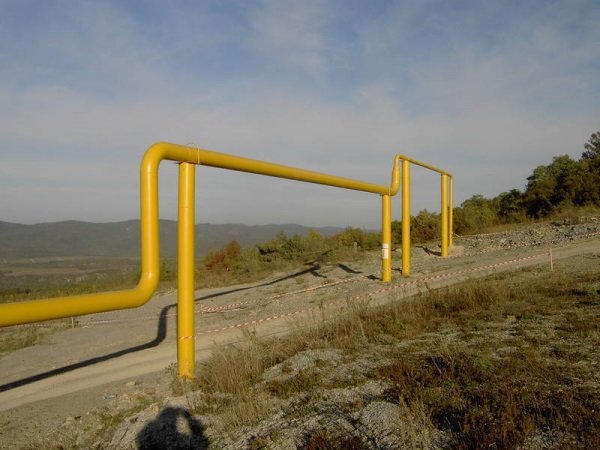
How much does it cost to carry out gas, and how long will this process last?
To answer this question, it is worth looking at some aspects. This includes the distance of your home from public gas. The cross-sectional diameter of the pipe also matters here. It should also be assessed whether the owners of neighboring plots will allow gas to be piped through their territory. It will be important to have their written consent to the fact that you are conducting gas. Is there enough pressure in the line? How large the area of your home is - the amount of gas consumed will depend on this.Very often, problems arise among land owners who want to supply gas to their house, which is located in SNT. Often, SNT boards delay this process because they have an interest in ensuring that gas can only be distributed centrally. In such cases, the cost of gas connection is significantly higher for a SNT member.
If gas is supplied to a site that is intended for individual construction (individual housing construction), then in this case the situation may be complicated by work to coordinate the installation gas main with self-government bodies. They may own, for example, the roads through which your pipe will pass.
Most specialists have the following practice: the owners almost always lack any documents. Thus, assistance is constantly required in obtaining these same documents, after which gas wiring is the last task. The price is different each time, but on average it is 200,000 rubles for preparing documents and another 100,000 rubles for all the necessary work.
In addition, you can also vary the timing of gas delivery to the house. When you want to supply gas quickly, you should establish close cooperation with existing gas services. When you don’t have any special acquaintances, this process can last several years. Costs better job leave it in the hands of professionals.
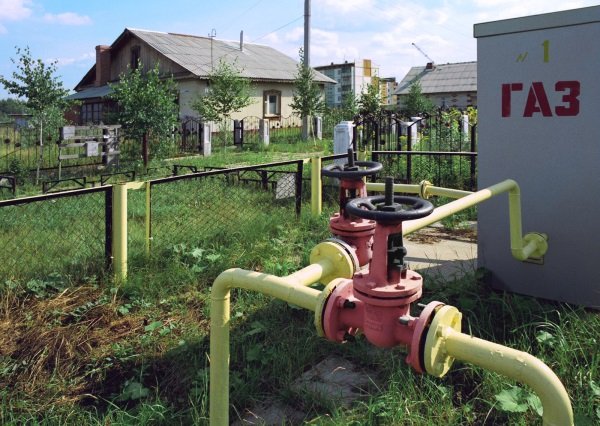
It is important to remember that cutting into the highway in violation will be a criminal offense.
How can you supply gas to your dacha?
If you want to make your dacha more comfortable, not think about firewood and use it only for natural gas, you will need to tinker a little with important documents and save up a good amount of money. It is worth remembering that connecting a gas pipe and purchasing equipment is expensive. In addition, according to the law, all expenses for installation within the garden community will be borne by the summer residents themselves.The first thing required is obtaining a gasification permit. It is necessary to go to the local gas services with this question - these are Gorgaz, Raigaz or others. There you will receive all the information on the conditions of gasification and a list of documents that need to be prepared to supply blue fuel to your dacha. In the same place you will receive a form with technical conditions. Please note that it must be issued free of charge. According to the law, both verification and processing of all documents that you bring must be free.
You should contact the design organization to draw up a project. You shouldn’t try to catch what’s cheaper - you’d better pay more, because design errors can cost you your whole life - gas is an explosive and fire hazardous substance. Good specialists They will fully study all the intricacies of your site or dacha and, based on them, will draw up a project.
When this stage has been passed, you should give the project to the workers in the gas service. Based on it, design and estimate documentation will be prepared. This service will be paid and, and it should be considered according to the prices of Glavgosexpertiza. In addition, you have the opportunity to contact a private company, where the price will be calculated according to personal criteria.
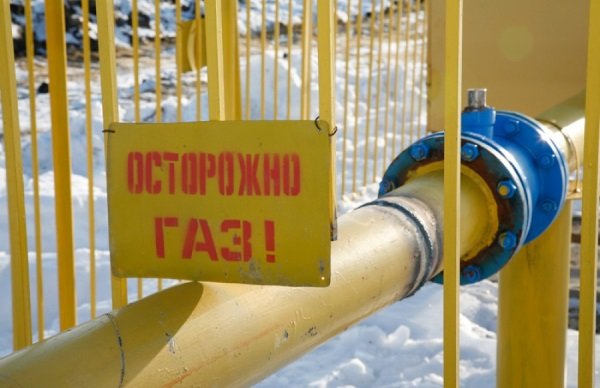
Next, you need to choose an organization that will supply gas to your dacha. When choosing a contractor, do not forget to look at his license for the possibility of carrying out gasification. It is also worth paying attention to whether the workers have experience in this area. It is important to remember that the work does not end only with the installation of the pipe. They must also install all the equipment at your dacha.
It is mandatory to conclude an agreement with the contractor and prepare an estimate. It is also necessary to include the price of supplying gas to the house - approximately 5-7 thousand rubles per meter. When the partnership does not have a gas network, it will be necessary to pay for its construction.
How to bring gas to the village?
In city apartments, natural gas will bring heat into the house, but in rural areas, most are heated, as before, either with wood or coal. But, today, the issue of gasification of the village is quite acute, and when a settlement has no plans for gasification of the area, then its residents themselves should think about the possibility of providing gas.You must first create a group and legally register it as a consumer society.
A charter must be created, a meeting must be held at which you will choose a person who, on behalf of your society, will receive all permits for gasification of the village.
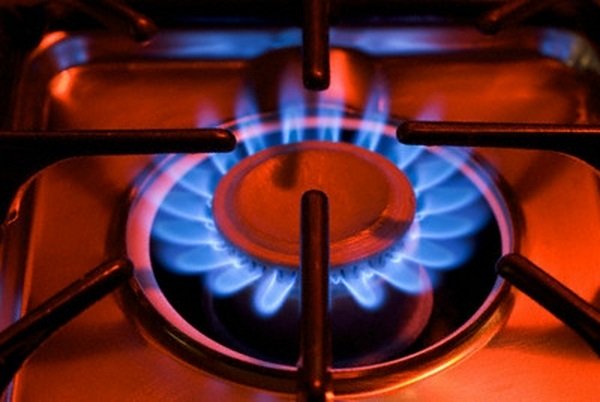
After which, your representative is obliged to submit an application to the regional organization that distributes gas, on behalf of all members of the society, for the opportunity to receive technical support. gas connection conditions. The following documents should be added to the application:
- documents that confirm the authority of the person who signed the letter of request (written application);
- copy from master plan the district where the location of your village is indicated;
- documents that will serve as confirmation of ownership of existing gasification facilities or documents for land plots that need to be gasified.
After you find a contractor and complete the construction of the gas pipeline, it will be important to sign a gas supply agreement.
There are two ways to supply gas to your home:
- Connect (cut into) the main gas pipeline
- Install system autonomous gas supply based on liquefied gas (LPG)
Gas supply from the main gas pipeline is more convenient and cheaper: there is no need to install an LPG tank and monitor the presence of gas in it. However, connecting to the main gas pipeline is not always possible.
Who determines the possibility of connecting a private house to the main gas pipeline?
The possibility of connecting a private house to the main gas pipeline is determined by its owner. Therefore, before ordering project documentation for gas connection, it is necessary to identify the owner of the gas pipeline.

It’s good if it’s a local sales company or simply Gorgaz. In this case, it is enough to apply to its manager for permission to connect the gas. After receiving it, you can contact the design organization and order a project for connecting your housing construction to the specified main gas pipeline.
It is much more difficult if the owner of the main gas pipeline is industrial enterprise. In this case, there is a high probability of receiving a categorical refusal.
From design documentation to home heat
Before ordering the development of project documentation, it is necessary to prepare a package of documents, the first place in which should be a document confirming the ownership of the house building and the plot of land on which it is located. It should be borne in mind that the decision to gasify a house can only be made by its owner. It is he who must make the relevant statements and requests. Tenants or family members do not have such a right, but can act on the basis of a notarized power of attorney received from the owner of the house.

The second on this list should be a permit from the district architectural and planning department for gasification, issued in accordance with the long-term development plan for the area, which will save the house owner from possible incidents in the future and avoid situations in which the laying of a gas pipeline can be carried out in an area where In the future it is planned to build a multi-storey building.
The package of documents must also include:
- A copy of the technical passport for the house, which should be obtained from the BTI
- Topographical diagram of the site with a gas pipeline marked on it. The scheme must be certified by the city gas authority.
- If the section of the gas pipeline from the house to the gas main passes through land owned by third parties (neighbors), you will have to obtain written permission from them to lay it.
- Technical conditions, which should be obtained from the city gas department by providing there a copy of the BTI passport, a certificate of ownership of the house and a personal statement from the homeowner for the issuance of technical conditions.
These documents are sufficient to develop a gasification project for housing construction and connect it to the main gas pipeline. So you can go to the designers!
Selection of gas equipment

The choice of equipment should be made at the design stage. It is important what type of boiler will be used and how the hot water supply will be provided.
For boilers with an open fuel combustion chamber, it is necessary to install a chimney. To do this, you can go the traditional route and build a brick chimney, or you can use modern ceramic chimneys or sandwich chimneys, which can be installed outside the house.
After the construction of the chimney, its readiness is checked and a report is drawn up, which is signed by a representative of the fire service and representatives of the city technical supervision.
For boilers with a closed combustion chamber, you can limit yourself to a coaxial chimney, which is not examined.
The selection of a heating boiler is carried out depending on the area of the building and the degree of its thermal insulation. Depending on the power of the boiler, all other equipment is selected: boiler indirect heating, gas meter, etc.
All equipment used must have safety certificates. Technical passports of heating equipment are included in the package of documents, which, together with the gasification project, is submitted to Gorgaz for further approval.
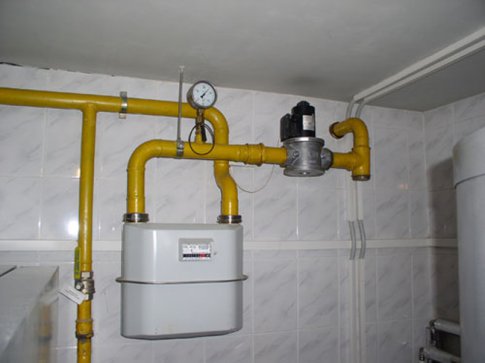
After agreeing on the project, you can safely begin installation. To do this, you need to contact a specialized organization. Often, work on connecting to the gas pipeline is carried out by city gas workers on the basis separate agreement, but at the same time everything preparatory work, including laying a gas pipeline, digging ditches or installing supports, are carried out by the customer independently.
Therefore, it is better to use the services of a third-party organization and order all the work as a whole.
Gas is connected. What's next?
After connecting to the main gas pipeline, you must become a subscriber of the local sales company (Gorgaz). To do this, the gas pipeline and installed heating equipment must be accepted into operation by a commission, which includes a representative of the gas service and the contractor.
When inspecting the gas pipeline, its compliance with the design documentation and safety is checked, about which a special act is drawn up, on the basis of which an act on putting the gas pipeline into operation is concluded.
On its basis, a gas supply contract is concluded.
Things to remember
The gas pipeline will not be put into operation if the premises in which the equipment is installed does not meet safety requirements.

In particular, install boilers and gas ovens only possible in rooms with a volume of at least 15 m3. They must have a permanent ventilation system, the main purpose of which is to reduce the level of gas concentration in the event of a leak. When using equipment with an open combustion chamber, a constant supply of fresh air is also necessary.
The door to the room must open outward, and the windows must have a glass area of at least 1.5 m2. All this is necessary in order to dampen the shock wave in the event of a gas explosion and prevent more serious destruction.
If there is no main gas pipeline...
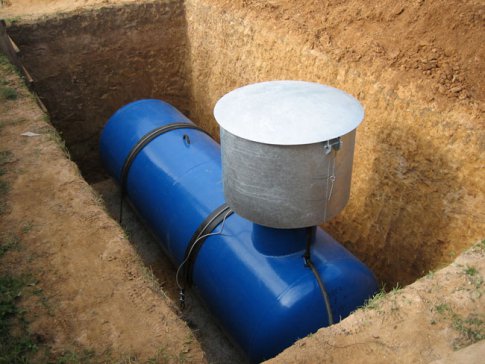
If it is impossible to connect to the main gas pipeline, you can supply gas to the house using an autonomous gas supply system. This will also require a project, the development of which is carried out with ownership of the house and the land on which it is located.
Based on the design documentation, a gas pipeline is laid to supply gas from the LPG storage tank to the house. To ensure uninterrupted gas supply over a long period of time, it is better to use large-volume gas holders installed underground.
The cost of liquefied gas is slightly more expensive than natural gas, but its use allows you to get high level comfort and safe heating system of a country house.
Heating a private home is one of the primary tasks that owners of new households, summer residents and residents of the private sector are forced to solve. In most cases, given the presence of a developed gas distribution infrastructure, today the most popular systems among the population are considered to be gas heating. Having chosen this type of heating, all that remains is to pipe gas into the house and install the necessary equipment.
The question is what the procedure for connecting gas to a private home looks like today and how complicated this process is. In any case, once you make a choice, there is no turning back. In addition, gas is still the most accessible and cheapest type of household fuel for our country. It is possible to supply gas even if there is no main gas pipeline in the neighborhood.
The answer to this question is simple and clear, even without going into deep mathematical calculations and discussions about the ecology of this energy supply option.
Firstly:
- Gas, unlike other types of fuel, does not require storage (not taking into account gas tanks);
Secondly:
- Connecting a private home does not require complex installation work on your site;
Thirdly:
- Modern gas boilers equipped with all necessary control and safety sensors. Having gas supplied to the site, you can heat not only the house, but also other household and outbuildings. The presence of gas makes a house and a plot of land immediately a liquid commodity.
Gas supply automatically solves a lot of problems. You are guaranteed to receive almost uninterruptible source energy supply, which does not require additional investments during subsequent operation. You now always have fuel at your disposal. gas stove, and is constantly present in the house hot water. Having assessed all the pros and cons, it is worth studying the question of how much it will cost to connect gas and how to properly connect gas to a private home.
What connection options should you consider?
Today, the most common way to organize gas supply in a private household is to connect to a gas pipeline. For many settlements, especially near large regional and district centers, main gas pipelines are a common thing. However, in some cases such a connection is not possible due to the lack of a centralized gas supply. Gasification of certain regions of the country continues, but there are regions where local residents will have to wait for such a privilege for years.
If you find yourself in a similar situation, you can use liquefied gas, which is regularly delivered to household needs population. Many summer residents and owners country houses and estates use this type of fuel. Another question is what gas cylinders A house with a large area, over 150 m2, is problematic to provide. For domestic needs, heating requires a large amount of gas - according to preliminary calculations not less than 6000 m 3 during the heating season.
If you want to have a constant and uninterrupted supply of gas for domestic needs, including heating a private home, you cannot do without installing a gas holder. From a technical point of view, the gas tank perfectly solves the problem. If funds are not a question, this installation can successfully cope with the tasks assigned to her.
Despite the fact that the last two options are considered in the context of the absence of a centralized gas supply, they are considered quite practical and effective. The majority of consumers today use the most widespread connection option - main gas pipelines.
Important! You should know that gas is supplied exclusively to the finished capital structure. It is impossible to obtain permission to supply gas simply to a plot of land without a residential building. The building does not have to be residential and habitable. Gas can be connected to country house or make a connection to any other outbuilding.
Gas connection - necessary documentation and procedural issues
Bringing gas to the site where your residential building is located or there are other permanent buildings requires compliance with the necessary procedural formalities. The main task that is set before the owners of the house is to coordinate the design documentation and obtain permission to connect to the gas main.
To do this, you need to collect and prepare the following documents:
- technical passport for a residential building (structure);
- Certificate of ownership of a residential building, permanent structure;
- Certificate of ownership of the land plot or title agreement for the land;
- cadastral plan of the site with adjacent territories;
- house owner's passport;
- tax identification code (TIN).
Having collected necessary documents you can proceed to the following steps. Gas connection requires technical specifications (TU). From a technical point of view, specifications are a document that indicates the permissible location of connection to the main gas pipeline, its pressure and diameter, as well as the basic requirements of the operating organization. For example, this is what the official technical specifications form issued by Mosoblgaz looks like. In other regions, such documents may have a different appearance, slightly different form and design.

Obtaining technical specifications from the gas distribution organization is the first important step towards gasification of your residential building.
Technical specifications are the basis for the development of design documentation, which is subsequently subject to agreement with the organization providing gas supply services.
You should know! It is better to entrust the preparation of the necessary documentation for connection to specialized specialized organizations, which, by the nature of their activities, are engaged in the preparation of such documentation and the development of projects. It is the specialists who can tell you how to supply gas to a private home, assessing each situation specifically, based on the existing conditions.
Unauthorized, unauthorized connection to main gas pipelines is punishable by law.
Nuances and technical aspects of connection in the light of legislative innovations
In 2013, the Government of the Russian Federation introduced new rules for connecting gas to the population and standards for gas supply for domestic needs. This resolution also prescribes the procedure for connecting natural gas for the needs of private households in the new conditions.
Today, for those citizens who have expressed a desire to supply gas to their household using the main gas supply, the conditions have become significantly simpler, but at the same time, they have become stricter in the connection procedure itself. At the moment, the cost of connection for small households is only 20-50 thousand rubles, in contrast to the astronomical amounts previously spent on similar events with connection. Provided that you have enough for your own needs, including the operation of the heating system, no more than 5 m 3 per day. According to experts and the owners of residential buildings themselves, this volume is quite enough to heat 200 m 2 of living space.
The indicated amount is calculated from technical conditions when the distance from your site to the main gas pipe does not exceed 200 meters. A new procedure has been established that determines the gas connection to a private home in accordance with the new rules. All work is carried out in strict accordance with the established procedure; no other interpretation of the connection procedure is provided.
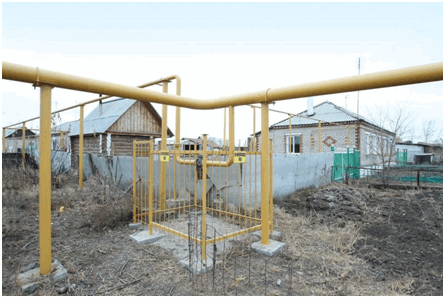
Formally, the new connection procedure is simple. If your documents: an application to the gas distribution company, a certificate of ownership of the house and the declared power of the gas boiler, comply with the regulations, you have the technical ability to connect to the gas main, all that remains is to conclude an agreement with the gas utility. Then everything goes the same way as before. Specifications, then the project and after all approvals, the direct installation of the gas pipe begins, connecting it to the gas distribution branch.
Relevant! In cases where the laying of a gas pipe is related to the operation of a gas pipeline that is under common ownership with neighbors, their written consent for connection will be required. If the gas pipeline needs to be laid through the territory of third parties (municipal property, house committee or private households), their approval will be required.
According to the new rules, the time for carrying out all work related to connecting a private residential building to the gas main is no more than 3 months from the date of submission of the application. In the case when your locality is on the list of localities subject to gasification based on the state program, the gas distribution company bears the costs. The pipe will only be routed to the border of your property. The rest falls on the shoulders of the owner.
In each individual case, current issues arise related to the implementation of the project, which have to be resolved on the spot. The cost of connection work varies depending on the tariffs established in a given region. The cost is influenced by the type of area where the work is being done, the topography of the site and the methods of laying the pipe. The work of inserting pipes and supplying gas to the house is assessed separately. Additional costs will arise already at the stage of connecting the gas pipe to the heating equipment and to individual elements of the entire gas supply system. Significant initial costs are subsequently recouped due to the high efficiency of the autonomous heating system and the satisfaction of needs at the household level.
